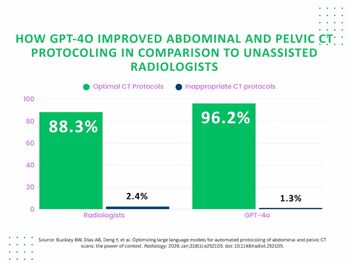
ADAC reports slow gamma camera sales as modality slump continues
New products may get vendor back on track ADAC Laboratories saw its stock go into the tank this month afterthe company projected third-quarter earnings to be sharply lowerdue to fierce competition in the domestic nuclear medicine market.Despite
New products may get vendor back on track
ADAC Laboratories saw its stock go into the tank this month afterthe company projected third-quarter earnings to be sharply lowerdue to fierce competition in the domestic nuclear medicine market.Despite the slide, the Milpitas, CA-based vendor of gamma camerasand information systems is hoping to regain its footing with thehelp of several new products to be released in coming months.
ADAC announced July 12 that revenues were expected to be $40.1million for the third quarter (end-July), an increase of 1% comparedto the same period last year but far lower than the $47.3 millionrecorded in the second quarter of this year.
Earnings were projected at 2 cents a share, or about $270,000after tax, compared to income of $5.5 million in the second quarterof 1994. This quarter's earnings include a $2.4 million restructuringcharge, as well as a charge for legal expenses incurred in ADAC'spatent infringement fight with Elscint. The dour news promptedADAC's stock to drop 21% to a 52-week low of $6.50 a share.
ADAC's plunging numbers were caused by the ongoing slump inthe U.S. nuclear medicine market, in which sales for all vendorsfor the fourth quarter of calendar 1993 and first quarter of calendar1994 have dropped 25% compared to last year, according to datacompiled by the National Electrical Manufacturers Association.
With its competitors resorting to "desperate" pricingto protect their installed bases, ADAC has had to follow suitwith aggressive pricing of its own, according to co-CEO and presidentDavid Lowe. ADAC has maintained and even increased its marketshare, but it has come at the expense of the company's margins,he said in a July 14 teleconference with industry analysts.
ADAC has several tricks up its sleeve to improve its competitiveposition in the months to come, however. The company implementeda restructuring earlier this year that reduced its work forceby 10% (SCAN 5/4/94). ADAC is also moving to streamline its manufacturingprocesses by moving to a "just-in-time" system of fillingorders.
ADAC is also counting on several new products to improve itsprospects, including:
** QuadRIS, a new client-server radiology information systemsproduct to be marketed by subsidiary ADAC/SD&G HealthcareSystems. ADAC/SD&G has completed the first installation ofQuadRIS at the Mayo Clinic in Scottsdale, AZ, with more to follow;
** Vantage, a simultaneous transmission-emission attenuationcorrection technique for ADAC's Vertex adjustable dual-head gammacamera. Vantage was shown as a work-in-progress at the Societyof Nuclear Medicine meeting in June (SCAN 6/1/94). ADAC hopesVantage can improve the specificity of cardiac nuclear medicinescans by 10%, strengthening the modality's competitive positionvs. echocardiography;
** A new, lower cost version of Vertex. ADAC has reduced thenumber of circuit boards in the camera's electronics system, particularlyin the imaging chain, and has redesigned its mechanical componentsas well. The resulting product will enable ADAC to compete withan adjustable dual-head gamma camera at a lower price point thanthat presently commanded by Vertex.
In other news, ADAC reported that a second motion for preliminaryinjunction filed against it by competitor Elscint was denied lastmonth. Elscint is suing ADAC in U.S. District Court in Baltimore,charging the company with infringing its nuclear medicine patents.Elscint filed two motions for preliminary injunction to stop ADACfrom manufacturing gamma cameras pending the outcome of a jurytrial. The first motion was denied earlier this year (SCAN 6/1/94).The case is set to go to trial in October.
Newsletter
Stay at the forefront of radiology with the Diagnostic Imaging newsletter, delivering the latest news, clinical insights, and imaging advancements for today’s radiologists.




























